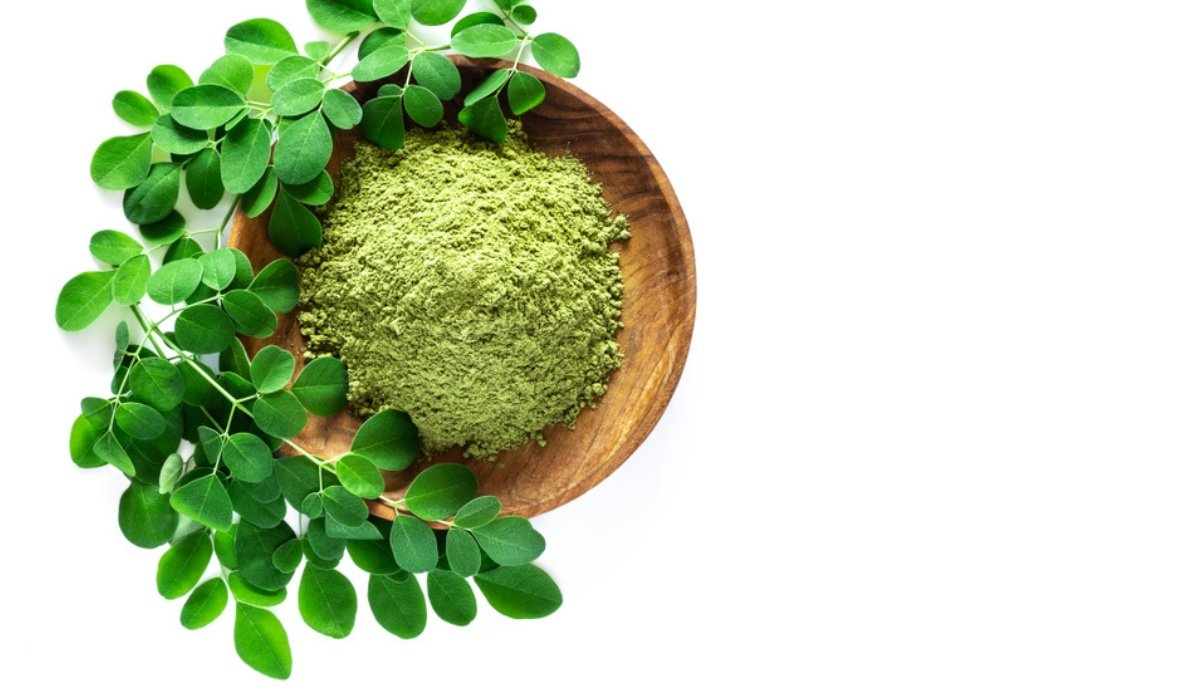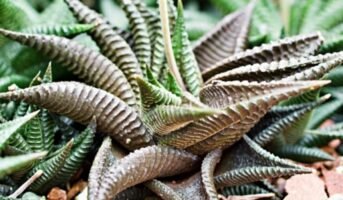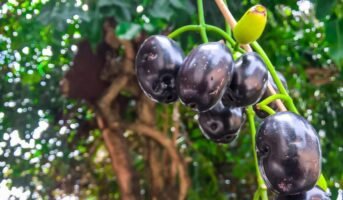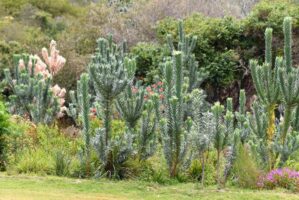The Indian subcontinent is home to the fast-growing, drought-resistant Moringa oleifera or Moringa tree, a member of the Moringaceae family. Common names for the Moringa tree, which is indigenous to the Himalayan foothills of India and Bangladesh, include drumstick tree (from the tall, thin, triangular seed pods), horseradish tree (from the flavour of the roots, which is reminiscent of horseradish), and ben oil tree or benzolive tree.
Moringa plants are also known as the “wonder tree” because of their outstanding nutritional and therapeutic properties, which have long been used and cherished in their original habitat.
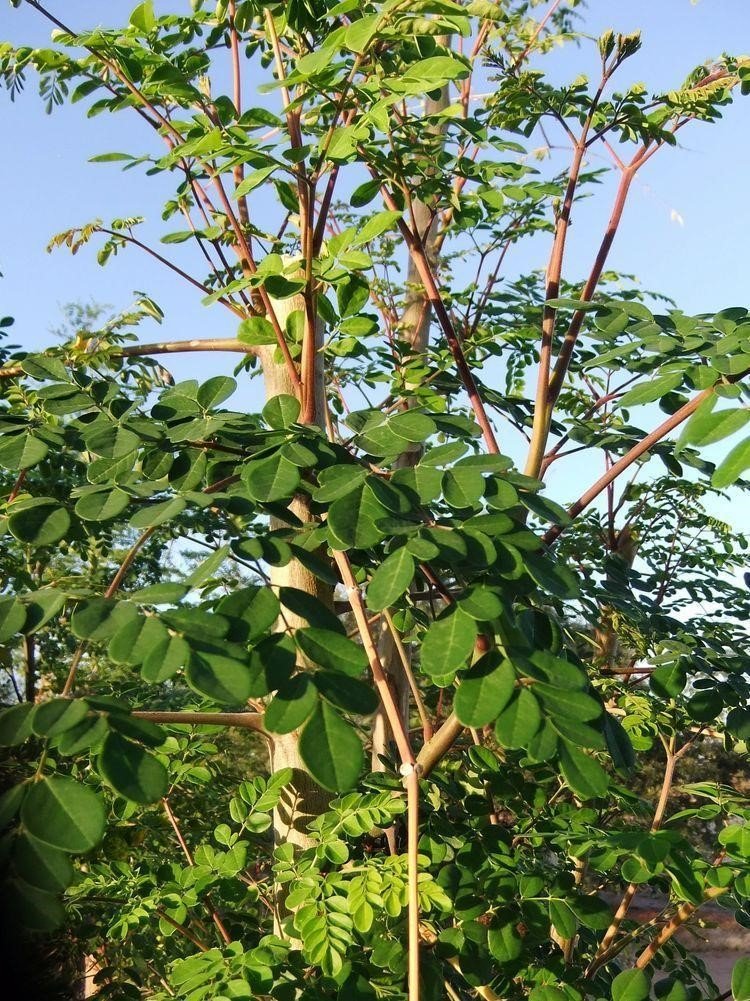
Source: Pinterest
See: All about Manure
Moringa tree: Key facts
| Botanical name | Moringa Oleifera |
| Common name | Moringa plant, Moringa tree, miracle tree, horseradish tree, drumstick tree, ben oil tree |
| Family | Moringaceae |
| Native area | Asia |
| Plant type | Tree |
| Mature size | 10 to 12 metres (33 to 39 feet) |
| Sun exposure | Direct sunlight |
| Soil type | Loamy, sandy, well-drained |
| Bloom time | Spring |
| Flower size | 2 cm in width and 1 to 1.5 cm in length |
| Flower colour | White |
| Native area | Asia |
| Toxic | No |
see: all about Oval Leaf Pondweed
Moringa tree: Physical description
- Fast-growing and deciduous Moringa trees can grow to a height of 10 to 12 metres (33 to 39 feet) with a trunk diameter of 45 centimetres (18 inches).
- A thick layer of cork surrounds the whitish-grey bark.
- The bark on young shoots is hairy and purple or greenish-white in colour.
- Moringa leaves are tiny, oval to obovate, or tear-drop shaped, with leaflets that are typically between one and two centimetres long and a width of 5-1 centimetres. The robust, thick, and silky smooth feathery leaflets possess a vivid green colour.
- The tree has fluffy foliage with tripinnate leaves, an open crown of drooping (umbrella-shaped crown)and frail branches.
- The fragrant, hermaphroditic flowers have five uneven, thinly veiled, yellowish-white petals surrounding them. The flowers measure 2 cm in width and 1 to 1.5 cm in length. They develop on thin, hairy stalks that are 10–25 cm long, forming spreading or drooping flower clusters (4–10 in).
- The flowering starts within the first six months after planting the drumstick tree. Flowers are produced annually during late spring and early summer season in cooler regions.
- The fruit is a hanging, three-sided brown capsule with a diameter of 20–45 cm that contains seeds that are 1 cm in diameter and dark brown. The seeds are dispersed by wind and water and have three pale, papery wings.
Moringa tree: Breeding
Moringa is grown and utilised in various ways. Hence, breeding aims for an annual or a perennial plant differ. One of the breeding aims for the commercial cultivation of the plant in India is the yield stability of the fruits.
Moringa tree: Yield and harvest
The Moringa or drumstick tree can be grown for its leaves, pods and its kernels for oil extraction and water purification. The yields differ extensively, based on the season, variety, fertilisation process, and irrigation procedure. The plant yields best in warm and dry conditions, with the help of supplemental fertiliser and irrigation.
Read: About Carpet sedum
How to grow Moringa tree from seeds?
- Local drumstick tree seeds have a better probability of germinating.
- Moringa seeds don’t have periods of hibernation and can be planted as soon as they mature.
- Plant seeds in a seed-raising mixture and maintain wetness.
- Instead of transplanting the seedling, it is recommended to put the seeds where the tree will grow. Young seedlings are weak and frequently die when they are transplanted.
- Immediately sow seeds into the ground.
- Select a location with light, sandy soil that is neither clay- nor water-logged.
- Plant seedlings in separate pots once they are big enough to handle.
- Before repotting or placing them in the garden, grow them in pots for at least a year.
- Always use potting soil of the highest calibre. The ideal would be a terracotta and tub type.
How to grow Moringa tree from a cutting?
- After the trees pause yearly fruit production, branches must be removed so that fresh growth might occur.
- These branches are a great way to grow fresh trees.
- Fill the hole with a combination of soil, sand, and composted manure after placing and inserting the cutting properly.
- Pack firmly around the cutting’s base.
- Create a little dome or cone shape that slopes down and away from the cutting.
- Water should not come in contact with the stem of the new trees.
- Water the cutting liberally, but avoid drowning it.
- In India, it is customary to cover the open end of the cutting with some cow dung. This is a great method of keeping bugs away from the cutting.

Source: Pinterest
Moringa tree: Care tips
Established Moringa trees are easy to care for and require minimal attention, especially if grown outside all year.
- It will be important for gardeners who do not reside in tropical or subtropical areas to bring their Moringa plants indoors during the cold months.
- Fortunately, they do well in container growth as long as the container has a minimum diameter of 30 inches.
- The Moringa is a deciduous plant that loses its leaves in the autumn in cool to cold areas.
- In the cool season, trees should be cut to a height of around 2 metres.
- Moringa plants growing in pots should also be pruned back throughout the winter to promote spring growth.
- In the garden, loamy soil with lots of extra compost and well-weathered manure is best for growing Moringa because it prefers well-drained, somewhat acidic soil.
- To guarantee that extra water drains away from the roots in locations with frequent rainfall, plant it on a mound.
Moringa tree: Sunlight requirements
- Once grown, they can withstand drought and harsh temperatures of up to 118 degrees Fahrenheit.
- Moringa thrives in direct sunlight and enjoys the heat. It flourishes in desert, subtropical, and tropical climates.
- Drumstick tree should be placed warmly and safely in southern states, where there is ample sunlight to keep it warm during the winter.
- A courtyard that faces north is ideal.
Moringa tree: Watering requirements
- Moringa can withstand droughts to some extent. However, it detests “wet feet” and will immediately display indications of distress if the soil retains water for an extended period following rain or irrigation.
- In the first year or so after planting, it will require routine watering, but once it is established, it can survive on rainwater alone.
- In pots, however, when the roots are unable to spread out widely in quest of moisture, the situation is different. Once the top 15-20 cm of the potting mix has dried off, water the pot thoroughly, making sure that any surplus water drains away freely.
Moringa tree: Fertilising requirements
- A six-month controlled-release fertiliser should be applied twice a year to Moringa– once in late winter and once in late summer.
- To give trees an extra boost from spring to late summer, liquid or water-soluble fertilisers may also be applied.
- Compost and aged manure should be added as mulch in the spring and spread over the roots of trees present in the garden.
Moringa tree: Pruning requirements
Regular pruning is an essential practice that can contribute to the optimal health of moringa plants. It promotes leaf growth and prevents the tree from becoming too tall. If left unpruned, moringa plants tend to become tall with many branches but few leaves. Moreover, they only flower near the top of the branches, which makes harvesting a challenging task. Pruning the plant regularly and encouraging branching can increase the yield of the leaves, flowers, pods, and seeds, all of which are edible, including the roots.
Moringa tree: Common pests and plant diseases
- There are no significant diseases that affect Moringa, although it can be attacked by common garden pests like aphids, caterpillars everywhere, and fruit flies in warm climates.
- The caterpillars and aphids will be controlled by pyrethrum-based pesticides.
- There are specific products available, so ask for help when purchasing and utilising fruit fly controls.
Moringa tree: Common problems
Generally, Moringa trees are known for being highly resistant, fast-growing and trouble-free. However, there are a few potential issues to keep an eye out for, including:
- Root rot: This is the most common problem that can arise with moringa trees. If the soil doesn’t drain quickly enough, heavy rainfall could lead to the soil becoming saturated, causing the tree to die from root rot within days. It’s best to ensure proper soil drainage when initially planting the tree to avoid this issue.
- Fruit and/or twig rot: While less common than root rot, it’s still important to be aware of fruit and/or twig rot, which is caused by a fungus that turns the seed pods or twigs brown. This can be treated with a copper-based fungicide.
- Canker: While even less common, some types of canker can appear on moringa trunks and branches. This condition looks like a wound on the tree, and if you notice it, it’s important to prune off damaged limbs or branches. Additionally, avoid pruning your moringa too heavily during rainy periods to prevent the bacteria from spreading to other parts of the tree.
Moringa tree: Uses
- Throughout its regional distribution, the Moringa tree offers a wide range of culinary uses.
- Whole leaves (including leaflets, stalks, and stems), immature, green fruits or seed pods, fragrant flowers, young seeds, and roots are all edible portions of the plant.
- The Moringa is one of the most important and practical plants according to Indian Ayurveda medicine, which employs every component of the plant.
- Oil found in Moringa seeds is suitable for cooking. Taste-wise, it is fairly acceptable and doesn’t go stale.
- Products from the Moringa tree are used extensively in Indian Ayurveda medicine, including as a natural antibiotic, a labour assist, a treatment for liver diseases, and a wide range of other conditions.
- Cattle, sheep, goats, pigs, and rabbits are all able to consume leaves. Additionally, leaves can be fed to carp and other fish.
- A blue dye produced by wood has been utilised in Senegal and Jamaica.
- In addition to being used to make medicines and bland-tasting condiments, the gum extracted from a cut tree stump has been employed in calico printing and medicine-making.
- It is possible to clarify honey without boiling it by using powdered seeds. Sugarcane juice can also be clarified using seed powder.
- Moringa trees are frequently used to make live supports for fencing around gardens.
Moringa trees are often used as attractive trees in gardens and along streets.
- The damping-off disease (Pythium debaryanum) can be avoided by adding Moringa leaves to the soil before planting.
- The pliable, mushy wood doesn’t produce good firewood, but the pulp can be used to make newsprint and writing paper.
- To make ropes or carpets, the tree’s bark can be hammered into a fibre.
- As they are rich in antioxidants, vitamins, and essential elements, the young branches, blossoms, and seed pods are frequently added to soups and stews.
- The leaves can be dried and ground into a powder, which is then used to produce a herbal tea or taken in capsule form. In place of horseradish, the root can be peeled and grated.
- In lotions and soaps, the oil derived from mature seeds may be used since it is reported to have antifungal effects.
FAQs
Is Moringa tree toxic?
Not particularly. Only the bark and roots are said to have toxic chemicals.
Should Moringa trees be kept inside in winter?
Yes, strictly, as they're native to tropical and subtropical areas and don't enjoy cold weather.
Housing News Desk is the news desk of leading online real estate portal, Housing.com. Housing News Desk focuses on a variety of topics such as real estate laws, taxes, current news, property trends, home loans, rentals, décor, green homes, home improvement, etc. The main objective of the news desk, is to cover the real estate sector from the perspective of providing information that is useful to the end-user.
Facebook: https://www.facebook.com/housing.com/
Twitter: https://twitter.com/Housing
Email: [email protected]
